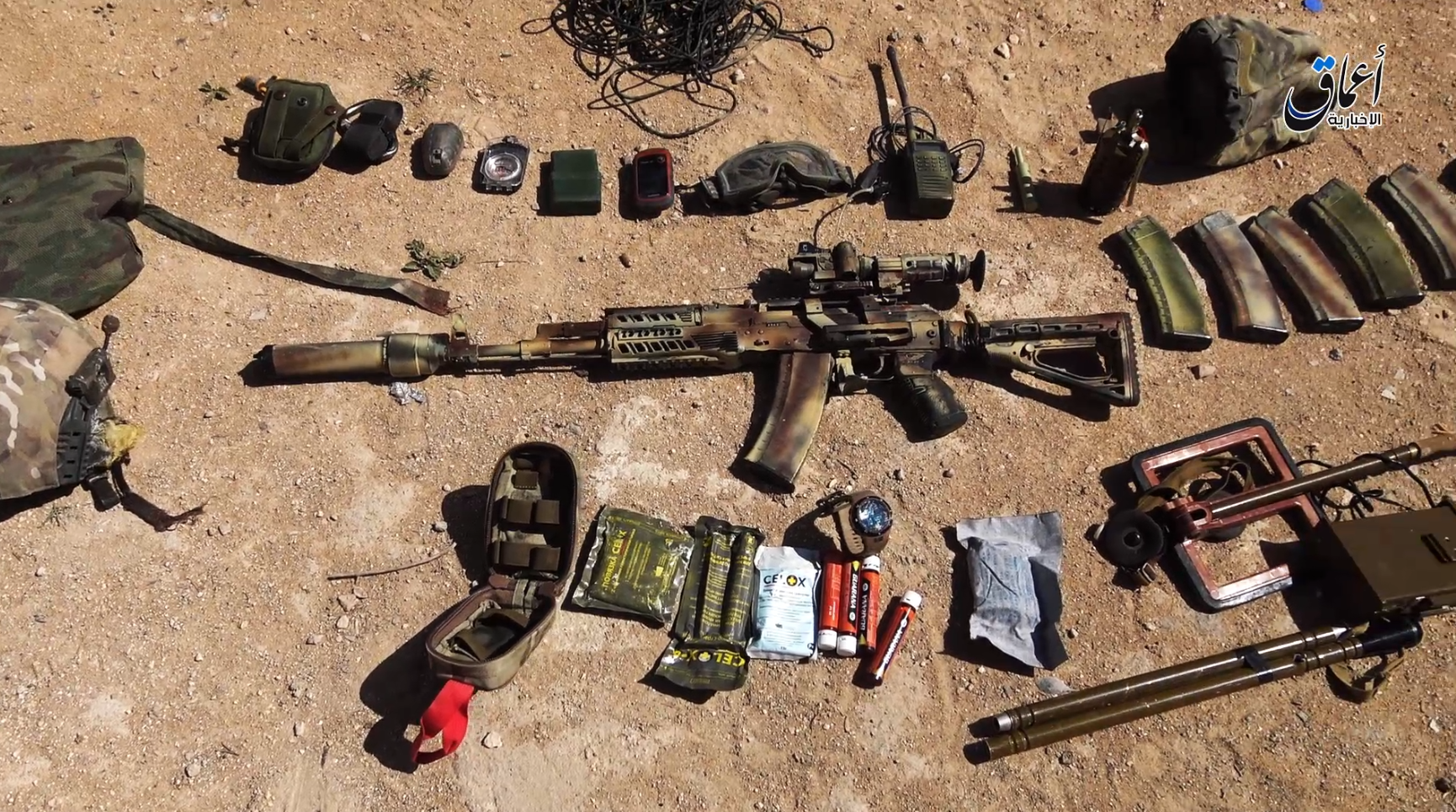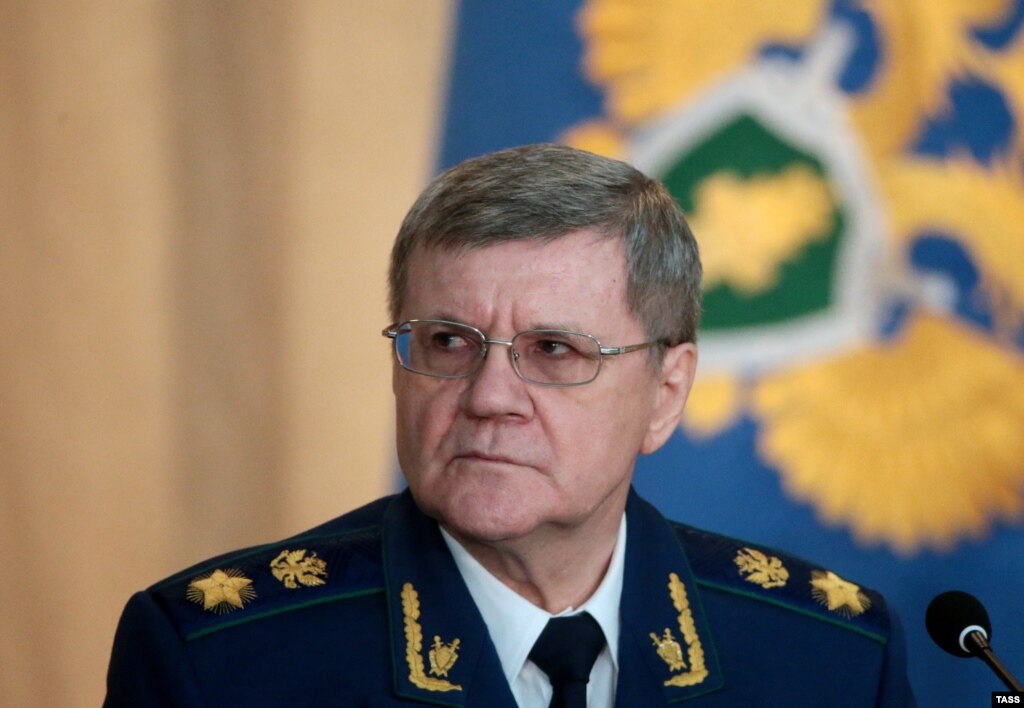LIVE UPDATES: TASS reports that more than 160 fighters from Ingushetia have joined ISIS, according to Ingushetia’s Internal Minister Aleksandr Trofimov.
Welcome to our column, Russia Update, where we will be closely following day-to-day developments in Russia, including the Russian government’s foreign and domestic policies.
The previous issue is here.
Recent Analysis and Translations:
– Getting The News From Chechnya – The Crackdown On Free Press You May Have Missed
– Aurangzeb, Putin, Realism and a Lesson from History
– Why the World Should Care About the Assassination of Boris Nemtsov
– How Boris Nemtsov Was Murdered: Investigation by Novaya Gazeta
– How Stalin Returned to Russian Contemporary Life – Meduza
UPDATES BELOW
A Russian officer was killed “fulfilling his combat assignment” near the ancient Syrian city of Palmyra, RIA Novosti reported.
No name was provided, but the officer was in the “special operations forces” (SOF), a Russian military representative at the Hmeimim base told RIA (translation by The Interpreter):
In the area of the Tadmor population center (Palmyra, in province of Homs) while performing a special assignment in guiding Russian airplane strikes to targets of the terrorists of ISIL (a terrorist organizations banned in Russia), an officer of the Russian special operations forces was killed.
According to the military representative, the officer was “performing a combat assignment in the area of Palmyra” for a week, and had discovered very important terrorist facilities and had passed on their exact coordinates in order to enable the Russian air force to deliver strikes.
“The serviceman died heroically, drawing fire on himself after he was detected by terrorists and surrounded,” said the representative.
Interfax said this was the “sixth” serviceman to die in Syria since the Russian air campaign began September 30, 2016.
Actually, it would be the 7th confirmed to have died; one is said by authorities to have committed suicide, although his relatives and friends dispute this claim.
And there are other combat deaths that have not been acknowledged or confirmed.
Yesterday we reported on two deaths; the first one, which was just revealed but occurred in February, was that of Sergei Chupov, a major who had fought in the Soviet war in Afghanistan, two Chechen wars, and finally Syria, and who served as either a trainer or a “negotiator” with Syrian armed factions in some capacity.
The soldier reported killed by Interfax today does not fit with the profile of Chupov.
More likely his profile fits with what we know about the death of another soldier, reported by ISIS on March 17 with a video of the man and his equipment which we analyzed yesterday.

The photo features a Kalashnikov AK-74M with tactical rail accessories equipped with a thermal imaging system and suppressor.
This equipment was all consistent with the role of an SOF officer.
As we reported, Armaments Research Services (ARES) notes one particular piece of hardware that indicates the man was part of a Russian special forces team.
This was the MIB multi-function munition – a weapon adopted by the Russian military as recently as 2007 and associated with special operations forces. It can be deployed as either a hand grenade or a landmine, capable of deploying its own tripwires.

The metal detector, pull cord and several packets of Celox anti-coagulant agent would all be useful tools for a fighter out on reconnaissance missions in territory littered with IEDs and mines.
Russia declared a partial withdrawal of its forces from Syria on March 14, but said it would keep its bases and air strikes would continue. Since then, casualties have continued to mount.
Today, the Kremlin propaganda service Sputnik International reported that Russian airplanes had struck “146 terrorists’ targets” and “eliminated 320 terrorists” in Syria between March 20-23, while surgically bypassing insurgents who had joined the ceasefire.
This afternoon, Russian-backed Syrian troops were said to enter IS-held Palmyra.
— Catherine A. Fitzpatrick
The contract figure is nearly half of the entire budget for the bridge to the Crimea, which was estimated by Rotenberg at 228.3 billion rubles (US $3.3 billion), and is expected to increase, much like the Sochi Games contracts increased.
The State Duma approved a budget of $4 billion for the bridge last year, but the ruble has severely devalued since then.
The announcement follows over a year of speculation about how the Kremlin would access the Ukrainian territory seized, and who would benefit.
Currently, hundreds of cars and trucks can sometimes wait days to get across the strait on a ferry.
Constructing this automobile and rail bridge is not an easy task; the Nazis and then later the Soviets failed at this massive effort. Mostotrest will be responsible for driving pylons into the sea bed under volatile conditions here, and assembling all the other features of the bridge.
The decision to take the contract was made by the Mostotrest board in 2015 and then concluded March 22; previously, Vladimir Vlasov, head of Mostotrest had said that his company didn’t want to take on the complex job. Then last week, Transportation Minister Maksim Sokolov revealed that Mostotrest would accept the contract.
These events were preceded by various maneuvers: a year ago, Marc O’Polo Investment, the chief shareholder of Mostotrest with 68.45% of the shares, owned by Igor Rotenberg, Arkady’s son, sold their package of shares for 10 billion rubles to TKF Finance, which in turn is a related to Russian Railways’ non-profit arm, called Welfare, which was founded in 1996. Russian Railways appoints the management of Welfare, which holds the pension funds of workers of Russian Railways. So as a result of this deal, Russian Railways receives 63.63% of the shares of one of Russia’s leading contractors.
RBC headlined the story “Almost Half of the Contract to Construct Bridge to Crimea Will be Received by Russian Railways Pensioners” because that’s how they see it: a state contract involving a crony company where a son is selling shares to his father which will benefit the pensioners of another company related to a loyal state oligarch, Vladimir Yakunin, who stepped down from position of CEO of Russian Railways last year at the age of 67 to pursue his “Dialogue of Civilizations” forum and creation of a think tank to pursue world peace.
The Kerch Bridge has already been involved in yet another scandal between Russia and Turkey that has frayed already terrible relations following Turkey’s shoot-down of a Russian plane near the Syrian border on October 31. As Sea News reported, on March 19, the Turkish-owned dry cargo vessel Lira barged into a support being built for the Kerch Bridge.
No one was insured, but Pillar No. 80 was destroyed and Pillar No. 79 severely damaged, as was other infrastructure. A Rostov arbitration court assessed the damage at 120 million rubles ($1.7 million), Gazeta reported.
According to FlashCrimea, the Turkish ship was blamed for not using a pilot ship to navigate the waters of the Kerch Strait, which is the usual practice there.
But a source told FlashCrimea that Rosmorport, the Russian marine port agency, had authorized the crossing of the Kerch Strait without the pilot escort. He said the collision was the result of “bureaucratic negligence.”
Ultimately, Crimean Bridge Info Center, which is run by the construction companies, said the incident would not affect the continued construction of the bridge.
— Catherine A. Fitzpatrick

Russian Top Prosecutor Vows Tougher Control Of NGOs
Russia's top prosecutor has vowed tighter control of nongovernment organizations' (NGOs) activities ahead of this year's parliamentary elections. Prosecutor-General Yury Chaika called on prosecutors on March 23 "to take exhaustive response measures" against NGOs "violating laws," including "their dissolution via court hearings." He also proposed to impose controls on regulatory and law enforcement agencies checking the NGOs' activities.
Chaika’s announcement is part of a number of measures the Kremlin is taking to ensure “managed democracy” remains in force, the term invented to describe the external trappings of elections combined with internal controls to keep United Russia, the ruling party, and other loyalists in power.
The State Duma or parliament has passed laws requiring all journalists to be accredited to cover elections. Only approved groups will be allowed to monitor them. Putin said in February that he expected foreigners to attempt to manipulate the Russian elections and urged preventive measures.
The Kremlin has already vetted thousands of groups to see if they are “foreign agents” and has handed out designations to 124 organizations, forcing some to close.
Chaika himself has come under fire from opposition leader Alexei Navalny and his organization, the Anti-Corruption Fund. Recently, a prosecutor’s wife alleged to have been involved with organized crime in a corrupt business related to the Chaika family obtained a document clearing her of any ties to an indicated gang member, but it was issue by a city hall that itself was entangled in the gang.
Work on exposure of the persons who have left for Syria to join IS has been strengthened, a package of measures have been undertaken to expose and intercept the criminal activity of persons involved in recruitment of youth.
More than 10 “information and prophylactic propaganda events with youth” have been held for students of middle and higher schools; Internet platforms to combat the ideology of radicals have been launched at the regional level; access to two extremist sites have been restricted, and persons involved in preparing and disseminating print, audio and video items with extremist content are being exposed.
Ingushetia has generally had less terrorist activity than neighboring Dagestan has currently and Chechnya has had in the past. In December 2015, Dagestan’s Interior Minister Abdurashid Magomed said that a number of residents of Dagestan had left for Syria with their wives and children. He said there were 900 fighters from Dagestan in ISIS, and 650 open criminal cases in Russia as a whole regarding persons alleged to have participated in ISIS abroad.
But earlier this month a group of journalists and human rights activists were attacked and beaten and their van set on fire by Chechen assailants near the border between Ingushetia and Chechnya. Then a bomb was set off at a Salafi mosque in Ingushetia recently in which a popular imam was targeted.
When President Vladimir Putin announced the withdrawal of some Russian forces from Syria on March 14, he claimed that thanks to the Russian air campaign, “2,000 fighters had been annihilated, including emigres from Russia.” It is not known how many out of the 2,000 Putin claims to have been killed were from Russia; Russian authorities have repeatedly estimated the total number of Syrian fighters who are originally from Russia as “2,700”.
As posts from Paul Goble, our syndicated author from Windows on Eurasia, has explained, Russia is struggling with how to address the problems of Islamist terrorism.